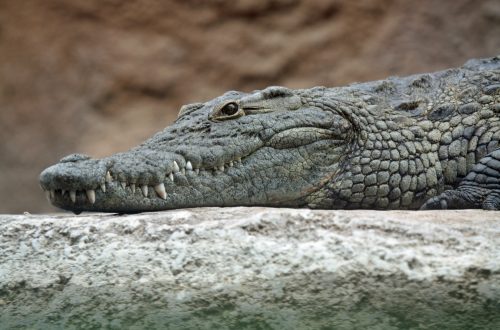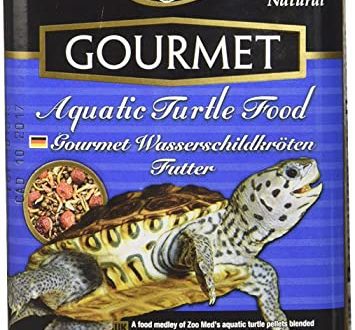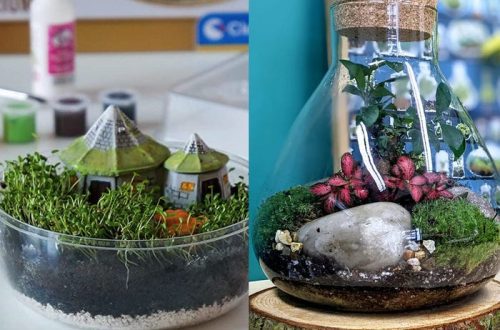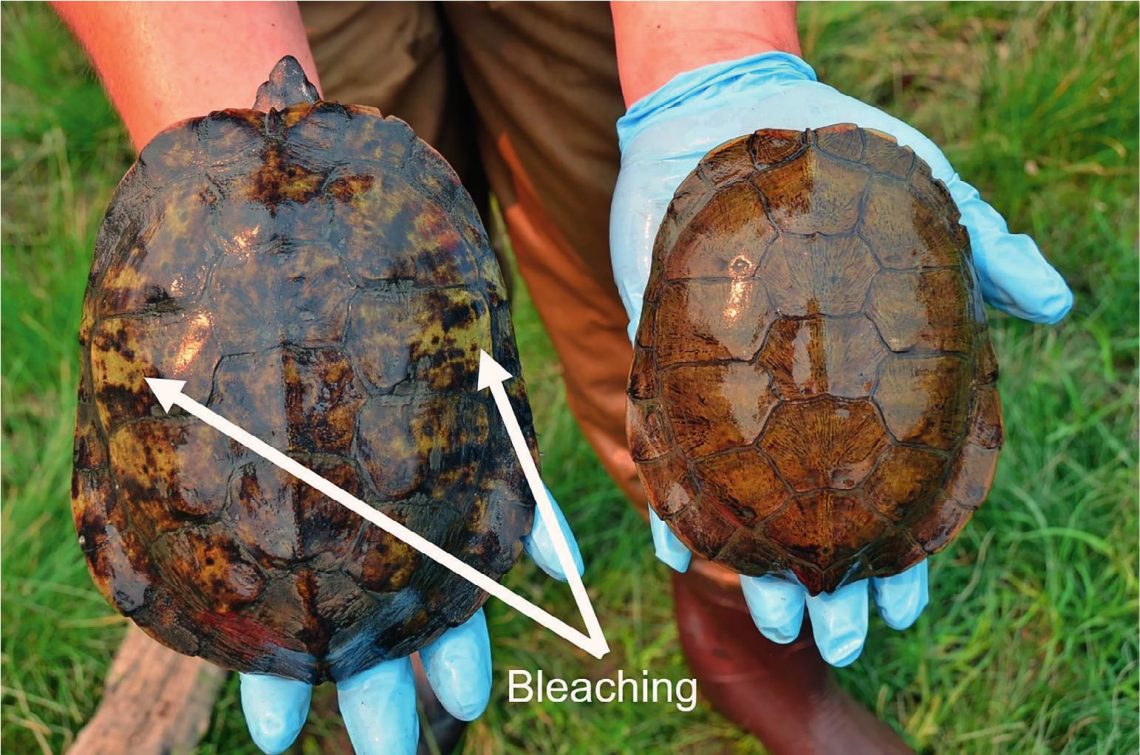
Fungus in turtles on the shell and skin: symptoms and home treatment (photo)
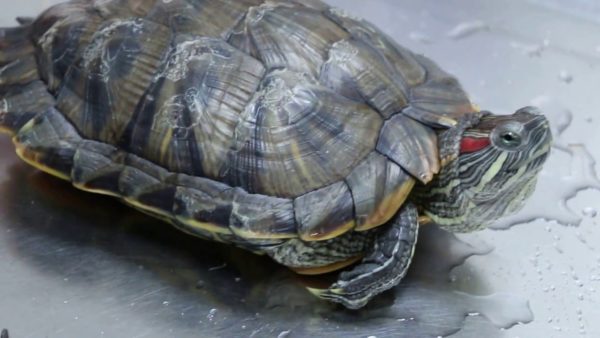
Improper housing conditions and various infectious diseases in red-eared and terrestrial turtles are the causes of mycoses – diseases caused by pathogenic fungi. It is quite difficult to treat the fungus, especially in advanced cases, therefore, if the first signs of a fungal infection are found on the shell or skin of a reptile, it is necessary to urgently contact a veterinary clinic.
Contents
Where does turtle fungus come from?
Mycoses of reptiles kept at home develop when pathogenic fungi Aspergillus spp., Candida spp., Fusarium incornatum, Mucor sp., Penicillium spp., Paecilomyces lilacinus. Most often, fungal diseases are a complication of viral, parasitic and bacterial infections.
Most exotic pets are diagnosed with a superficial form of mycoses – dermatomycosis, which is characterized by damage to the shell and skin of the animal. Pathology is accompanied by the destruction of the horny shields of the dorsal and abdominal shields, the formation of plaque, nodules and ulcers on the skin. Sometimes there are deep or systemic mycoses, manifested in the form of inflammatory diseases of the lungs, intestines and liver.
IMPORTANT!!! Some types of pathogenic turtle fungi are dangerous to humans, so when in contact with sick animals, precautions must be taken!
Fungus in the red-eared turtle
The fungus on the shell of the red-eared turtle is quite easy to confuse with a protracted molt, in which the horny shields are covered with white cobwebs. To clarify the diagnosis, determine the type of mycosis in the red-eared turtle and timely prescribe treatment for an aquatic pet, you should contact a herpetologist or veterinary specialist.
The most common causes of fungal diseases in aquatic turtles are:
- diseases of a bacterial, viral and parasitic nature;
- prolonged uncontrolled therapy of the animal with antibacterial drugs;
- frequent stress;
- cold water temperature in the aquarium, below 26C;
- lack of space for heating;
- mechanical damage to the shell;
- keeping an animal in salt water;
- unbalanced diet;
- hypo- and beriberi;
- lack of daylight and ultraviolet lighting;
- high water hardness;
- contact with infected relatives.
The combination of adverse factors against the background of a decrease in immunity, especially in the spring-autumn period, is the optimal environment for the reproduction of pathogenic fungi. Sometimes the cause of fungal infections is the long stay of the animal on land, resulting in drying and cracking of the shell and skin.
Treatment
Fungal infections in the early stages in pets can be easily cured by dietary adjustments, vitamin and mineral supplements, ultraviolet irradiation, and bathing the animal in antifungal drugs. The owner of an aquatic reptile is advised to periodically inspect the shell and surface of the animal’s skin; if the following symptoms of pathology are found, it is necessary to contact a veterinary clinic:
The fungus in the red-eared turtle is a very contagious disease, so treatment begins with isolating the sick animal and disinfecting the aquarium and soil. Antifungal therapy should be carried out taking into account the type of pathogenic fungus, which is determined in a veterinary laboratory.
Comprehensive treatment of mycoses in red-eared turtles is carried out according to the following scheme:
- Adding a few granules of methylene blue to the water of the aquarium until the water turns blue, or its analogues: Ichthyophore, Kostapur, Mikapur, Baktopur.
- Bathing the animal in baths with Betadine, decoction of chamomile or oak bark.
- At night, keeping a pet on land after treating the shell and skin with antifungal drugs: Nizoral, Lamisil, Terbinofin, Triderm, Akriderm.
- Irradiation of the reptile with an ultraviolet lamp for at least 12 hours a day.
- Eleovit injections or the introduction of vitamin and mineral supplements.
- Diet correction.
In the presence of fistulas and abscesses, surgical treatment is performed in the clinic. Therapy of fungal diseases in aquatic turtles lasts about 1-2 months. Monitoring the effectiveness of treatment should be carried out by a veterinarian.
fungus in tortoise
The fungus on the shell and skin of the tortoise occurs as a complication of infectious diseases or a primary disease after contact with an infectious animal. Concomitant factors for the development of dermatomycosis in Central Asian turtles are:
- unbalanced diet;
- consequences of antibiotic therapy;
- frequent stress;
- lack of vitamins and minerals;
- shell and skin injuries;
- no source of ultraviolet radiation;
- keeping a pet in a cold damp room;
- the presence of a sharp or wet substrate in the terrarium.
Treatment
The treatment of mycoses in land reptiles should also be handled by a veterinarian. Self-medication is fraught with a deterioration in the condition of a pet or the occurrence of relapses. For dermatomycosis of Central Asian turtles, the following clinical picture is characteristic:
The treatment of fungal infections in Central Asian turtles is based on the destruction of the pathogenic fungus and the restoration of the integrity of the surface cover and the defenses of the reptile’s body.
With antifungal therapy of reptiles, the following therapeutic measures are prescribed:
- Isolation of a sick pet.
- Terrarium disinfection.
- Installation of sources of daylight and ultraviolet radiation.
- Bathing in baths with Betadine.
- Treatment of the shell and skin with a solution of hydrogen peroxide and anti-inflammatory ointments: Lamisil, Nizoral, Triderm, Akriderm.
- Tetravit or Eleovit injections.
- Antibiotic therapy – Baytril injections.
- The use of hemostatic agents: Dicinone, ascorbic acid.
The effectiveness of the treatment can be judged by the absence of the appearance of new lesions, as well as the healing of the skin and shell. Depending on the neglect of the pathology, the treatment of dermatomycosis in tortoises can last from 3 weeks to 3 months.
How to prevent the development of mycosis
Fungal diseases of turtles in combination with a bacterial infection can cause the death of an animal. In order to avoid the occurrence of fungal infections, it is necessary to provide land or aquatic reptiles with appropriate comfortable living conditions and diet; at the first symptoms of diseases, it is recommended to contact a veterinary clinic.
How to treat fungus and mycosis in red-eared and tortoises
3.3 (65.71%) 7 votes



